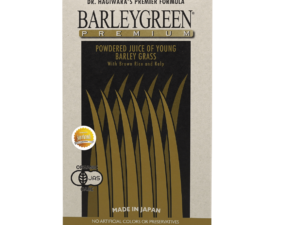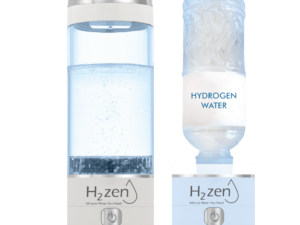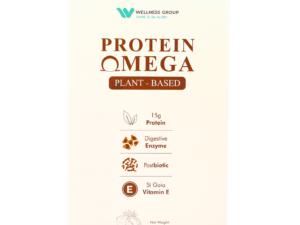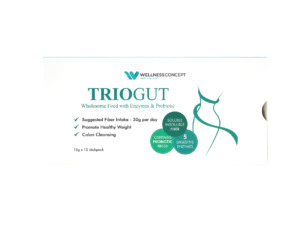What if the secret to better health isn’t in your medicine cabinet, but on your plate? Science shows that trillions of microorganisms living in your gut play a surprising role in everything from digestion to mood. These tiny helpers, called probiotics, thrive in fermented and cultured dishes—but not all options deliver the same benefits.
Research reveals that consuming live microorganisms through natural sources can strengthen immunity, support heart health, and even improve skin appearance. Unlike supplements, whole-food choices like yogurt, kimchi, and tempeh offer a delicious way to nourish your body while diversifying your meals.
Finding authentic probiotic-rich items requires attention. Many store-bought products lose their benefits during processing or add excess sugar. This guide simplifies the hunt by highlighting truly effective choices and explaining how to integrate them into daily eating habits.
Small dietary shifts can create lasting changes. By prioritizing nutrient-dense fermented foods, anyone can build a healthier gut microbiome—no drastic overhauls needed. Let’s explore how to make these powerful ingredients work for you.
Key Takeaways
- Probiotics support digestion, immunity, and overall wellness through natural food sources
- Fermented dishes like yogurt and kimchi contain live microorganisms with proven benefits
- Processed alternatives often lack active cultures found in authentic probiotic-rich foods
- Balanced diets become more effective when including diverse fermented ingredients
- Simple swaps can improve gut health without relying on supplements
Exploring the Benefits of Probiotic Foods
Did you know your gut houses over 40 trillion microorganisms working nonstop to keep you healthy? These tiny allies—primarily probiotic bacteria—act as frontline defenders, influencing everything from digestion to disease resistance. Research confirms that a balanced gut microbiota doesn’t just break down food—it trains immune cells to recognize threats and reduces inflammation.
Understanding Gut Health and Immunity
Your intestinal ecosystem directly impacts how your body responds to infections. When harmful bacteria outnumber beneficial ones, it can trigger conditions like diabetes or heart issues.
“A diverse microbiome acts like a personalized shield,”
explains a recent study. Simple choices—like adding fermented items to meals—help maintain this delicate balance.
How Fermentation Enhances Nutrition
Fermentation isn’t just preservation—it’s a nutritional upgrade. Friendly microbes transform cabbage into vitamin-rich kimchi or milk into digestible yogurt. This process creates enzymes and compounds that boost nutrient absorption. For instance, live cultures in fermented teas unlock antioxidants otherwise inaccessible in raw ingredients.
Modern diets often lack these microbial helpers. Prioritizing traditionally fermented options feeds your gut’s “good” bacteria, supporting metabolic processes and long-term health. It’s nature’s way of turning ordinary meals into wellness tools.
Top Probiotic Foods to Elevate Wellness
Ever wondered how some cultures maintain robust health with age-old dietary staples? The answer often lies in their microbe-rich creations. Let’s explore kitchen heroes that bring both flavor and wellness benefits to your table.

Yogurt, Kefir, and Traditional Buttermilk
Yogurt remains a top pick for good reason. Made from milk fermented with live cultures, it delivers lactic acid bacteria that aid digestion. Opt for plain varieties with “active cultures” listed—sweetened versions often lack real benefits.
Kefir outshines regular yogurt with 30+ microbial strains. This tangy drink combines bacteria and yeast, creating a powerful synergy for gut balance. Traditional buttermilk—the liquid left after churning butter—also packs beneficial microbes, unlike modern substitutes.
Sauerkraut and Kimchi: Fermented Vegetables
Sauerkraut transforms fermented cabbage into a crunchy probiotic source. Naturally occurring lactic acid bacteria break down sugars during fermentation, creating gut-friendly compounds. Choose refrigerated, unpasteurized versions for maximum impact.
Kimchi adds spicy flair to meals while delivering unique Lactobacillus strains. Its mix of chili, garlic, and fermented cabbage supports immune function and digestion. Try it as a sandwich topping or rice bowl enhancer.
| Food | Key Bacteria | Daily Serving | Tips |
|---|---|---|---|
| Yogurt | L. acidophilus | 1 cup | Pair with berries |
| Kefir | Multiple strains | ½ cup | Blend into smoothies |
| Sauerkraut | Leuconostoc | 2 tbsp | Add to salads |
| Kimchi | L. kimchii | ¼ cup | Mix with stir-fries |
Diverse Fermented Delights Beyond Dairy
Imagine unlocking global flavors while nourishing your gut—no dairy required. Cultures worldwide have mastered fermentation techniques that transform humble ingredients into nutrient-packed staples. Let’s explore plant-based treasures offering both bold tastes and microbiome support.
Tempeh, Natto, and Miso
Tempeh, a fermented soybean cake from Indonesia, packs 20g of protein per serving. Its nutty flavor and firm texture make it ideal for grilling or stir-fries. The fermentation process breaks down soybeans’ natural compounds, enhancing digestibility.
Japan’s miso paste blends soybeans with koji fungus and salt. This umami powerhouse contains over 160 beneficial compounds. Try lighter shiro miso in dressings or robust aka miso in soups.
Natto delivers a unique punch with Bacillus subtilis bacteria. This sticky soybean dish supports bone health through exceptional vitamin K2 levels—up to 10x daily needs per serving.
Exploring Kombucha and Fermented Teas
Kombucha’s tangy fizz comes from a SCOBY (symbiotic culture of bacteria and yeast). This bubbly tea contains antioxidants and organic acids that aid detoxification. Opt for raw, unpasteurized versions to ensure live cultures.
Fermented herbal teas like jun or water kefir offer caffeine-free alternatives. Brew them at home using:
- Quality loose-leaf teas
- Filtered water
- Glass containers
These beverages introduce diverse microbial strains while keeping hydration exciting. Start with small servings to let your gut adjust gradually.
Exploring foods high in probiotics: Their Role in Digestion and Health
Could microscopic organisms hold keys to preventing modern health challenges? Cutting-edge research reveals how fermented ingredients act as natural allies against chronic conditions. Their unique biochemical transformations offer benefits far beyond basic nutrition.
Scientific Insights into Probiotic Benefits
Studies show specific bacterial strains in fermented items like miso may lower cancer risks by 14-29%. A 2023 Journal of Nutritional Science review found regular consumers had:
- 23% reduced obesity rates
- 18% lower blood pressure levels
- Enhanced mineral absorption through phytic acid reduction
Researchers attribute these health benefits to microbial production of bioactive compounds. For example, Bacillus subtilis in natto generates vitamin K2—crucial for bone strength.
The Fermentation Process and Nutrient Enhancement
This ancient process acts as nature’s laboratory. When soybeans ferment into miso, they gain vitamin B12—absent in raw beans. Lactic acid bacteria break down hard-to-digest components, boosting iron and zinc availability by up to 50%.
“Fermentation doesn’t just preserve food—it bioactivates nutrients,”
notes Dr. Aminah Lee from Universiti Malaya. Her team discovered fermented teas increase antioxidant absorption threefold compared to regular brews.
Emerging evidence links gut health to mental wellness through the microbiome-brain axis. A 2024 study showed kimchi consumers reported 31% fewer anxiety symptoms—likely from enhanced serotonin production.
For those managing digestive concerns, choosing the best probiotic for bloating and gas involves understanding strain specificity. Lactobacillus-rich options often provide targeted relief while supporting overall immunity.
Selecting and Integrating Probiotic-Rich Choices
Navigating supermarket shelves for authentic microbial-rich options requires sharp eyes. Many products labeled “fermented” or “cultured” lose their benefits during processing. Smart shoppers prioritize items retaining live cultures through careful preparation and storage.
Decoding Labels for Maximum Benefits
Look for phrases like “contains live cultures” or “unpasteurized” on packaging. Avoid products listing vinegar as the main preservative—these lack active acid bacteria. For yogurt, check ingredient lists for specific strains like L. acidophilus or Bifidobacterium.
Refrigerated sections often house viable options. Shelf-stable sauerkraut or kimchi typically undergo pasteurization, eliminating beneficial microbes. A recent study confirms unpasteurized versions contain up to 10x more lactic acid bacteria.
Raw vs. Heat-Treated: What Matters
Unpasteurized fermented foods maintain microbial diversity crucial for gut health. Traditional buttermilk—found in specialty stores—retains probiotics, unlike mass-produced cultured versions. Pasteurization extends shelf life but destroys delicate acid bacteria colonies.
- Choose refrigerated sauerkraut with visible brine
- Opt for yogurt with 3+ bacterial strains
- Avoid items with “pasteurized” on labels
Expert Insights for Optimal Choices
Wellness Group’s nutrition specialists recommend starting with small amounts of raw fermented items. Their team notes:
“Consistency beats quantity—daily teaspoons of kimchi often outperform occasional large servings.”
For personalized advice, contact Wellness Group via WhatsApp +60123822655 (Mon-Fri 9:30 am-6:30 pm, Sat 10 am-5 pm). Their experts help identify the one best probiotic sources matching individual health goals.
Creative Ways to Incorporate Probiotics into Daily Meals
Transforming everyday meals into gut-nourishing experiences doesn’t require complicated recipes—just smart additions. Start by blending yogurt into savory dishes like roasted aubergine with harissa or chilled beetroot soup. These flavor-packed creations make beneficial cultures feel like a natural part of your diet, not an afterthought.

Balanced Recipe Ideas and Meal Preps
Swap sugary breakfasts with raspberry-kefir overnight oats or tropical smoothies using tangy kefir. For lunches, mix cultured buttermilk into zesty salad dressings or layer kimchi into grain bowls. Dinner gets bold with miso-glazed vegetables or tempeh stir-fries paired with fermented vegetables.
Pairing Probiotic Foods with a Varied Diet
Balance tangy elements by combining sauerkraut with roasted sweet potatoes or adding miso paste to hearty soups. Meal prep becomes effortless when storing small batches of fermented items in airtight containers—preserve their crunch and microbial benefits all week.
Nutritionists suggest starting with 1-2 tablespoons daily. As Wellness Group Malaysia advises:
“Let your palate adapt gradually while exploring diverse textures and flavors.”
Thisapproachprevents digestive surprises while building lasting habits that support bothtasteand wellness.
Conclusion
Transformative health shifts often begin with what’s fermenting in your kitchen. Cultured dairy, aged soybeans, and brined vegetables offer accessible paths to nourishing your gut health through natural microbial allies. These living ingredients work synergistically with your body, supporting digestion and immune responses without drastic diet changes.
Quality matters more than quantity. Seek unpasteurized versions of kimchi or miso to ensure active bacteria colonies survive. Avoid products relying on vinegar or excessive salt for preservation—these shortcuts eliminate the very benefits you’re seeking.
Simple additions spark lasting change. Stir kefir into morning oats, top soups with sauerkraut, or snack on tempeh strips. Each small choice feeds your microbiota, creating ripple effects across physical and mental wellness.
Your plate holds power beyond basic nutrition. By embracing traditionally fermented staples, you join generations who’ve harnessed probiotics for vitality—one flavorful bite at a time.
FAQ
What makes yogurt a reliable source of probiotics?
Yogurt contains live cultures like Lactobacillus bulgaricus and Streptococcus thermophilus, which support gut health. Brands like Chobani and Siggi’s prioritize active strains, but always check labels for “live and active cultures” to ensure benefits.
Can store-bought sauerkraut provide the same benefits as homemade?
Many commercial versions are pasteurized, which removes beneficial bacteria. Look for unpasteurized options like Bubbies or Farmer’s Garden, or try fermenting cabbage at home with salt for a richer lactic acid bacteria content.
How does kimchi differ from other fermented vegetables?
Kimchi uses napa cabbage, radishes, and a mix of spices like gochugaru (Korean chili). Its unique fermentation process with garlic and ginger boosts vitamins and creates diverse strains of probiotics not found in sauerkraut.
Is kombucha safe for everyone to drink regularly?
While GT’s Kombucha and Health-Ade offer low-sugar options, those with weakened immune systems or candida concerns should consult a doctor. The drink contains yeast and trace alcohol, which may not suit all diets.
Why is tempeh considered a gut-friendly protein?
Tempeh, made from fermented soybeans, contains prebiotics and probiotics. Brands like Lightlife retain the natural mold (Rhizopus oligosporus) that breaks down proteins, aiding digestion and nutrient absorption.
Can pasteurized products still support gut health?
Pasteurization kills harmful pathogens but also reduces live cultures. Opt for raw, unpasteurized kefir or miso (like South River Miso Co.) to maximize probiotic intake. Check for terms like “raw” or “unprocessed” on labels.
How much probiotic-rich food should someone eat daily?
A small serving (½ cup of yogurt or ¼ cup of sauerkraut) daily can improve microbiota balance. Gradually increase intake to avoid bloating, and pair with fiber-rich foods like oats for better results.
Are there non-dairy options for lactose-intolerant individuals?
Coconut kefir (by GT’s), water kefir, or fermented pickles offer dairy-free alternatives. Tempeh and miso soup also provide plant-based probiotics without triggering lactose sensitivity.
What’s the difference between probiotics and prebiotics?
Probiotics are live bacteria found in fermented foods, while prebiotics (like garlic or bananas) feed existing gut bacteria. Combining both—such as yogurt with almonds—enhances digestive health.
Can pregnant women safely consume probiotic-rich foods?
Most fermented foods are safe, but unpasteurized options may carry risks. Consult a healthcare provider before adding new items like kimchi or kefir to ensure they align with prenatal guidelines.






